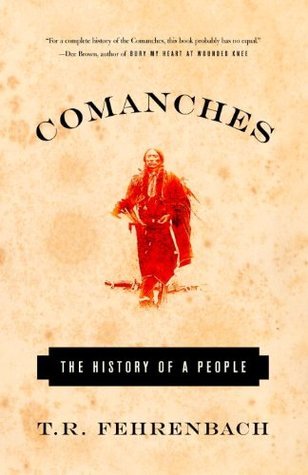What do you think?
Rate this book


594 pages, Kindle Edition
First published January 1, 1974
It was an enormous, varied, but almost formless land with few dividing boundaries...rare river bottoms, with shallow, muddy flows but carved deeply into the land and lined with trees; distant scarps and buttes thrusting their crumbling limestone up from the dusty mesa; mesquite-studded landscapes vanishing suddenly into the high, thin air of blue-mountained desert; and perhaps most dramatic to the human eye, the border region where the trees and rain ran out and the landscapes turned to unmeasurable miles of bending soughing grass.
The dead were mutilated horribly. Arms and legs were severed, genitals invariably smashed or amputated. Female breasts were sliced off, and corpses of both sexes were eviscerated and decapitated. Bloody entrails were burned if there was time. All this crippled the enemy dead for eternity. Above all, the scalp of every age and sex was taken, by drawing a deep cut around the hair line, then popping off the top of the head. Sometimes the whole scalp, sometimes only a centerpiece was retained, to be tanned carefully and stretched and preserved as a permanent trophy.
The Indian agent did not understand Comanches, nor could he really feel what was happening to their souls. But hungry children troubled him. He sent emissaries, with wagons of food, out to the prairie. When these arrived, the Comanches were sitting in their tipis in a snow storm. They were starving. They accepted the food sullenly and listened to the agent's request that they come back to the reservation, where they would be cared for by the government. The last hunt camp was broken. The tipis were struck, the bows and lances put away. Then, in a long, silent column, the Comanches left the graveyard plains, returning to the agency for the completion of their destruction.